-
Genealogy & Names
-
Tourist Information
-
Culture & Reference
|
Jul 2020 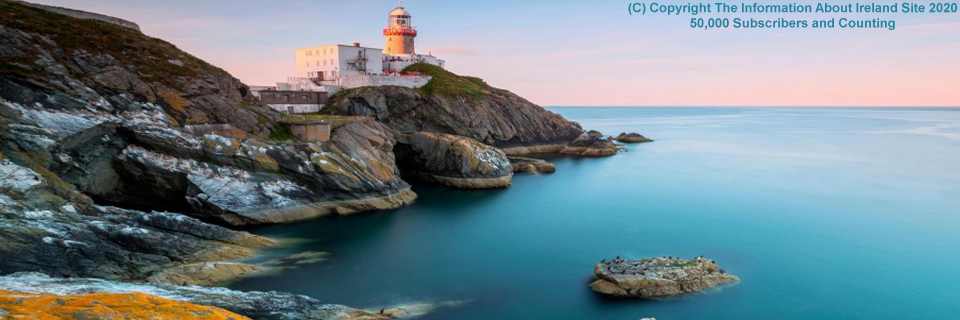
Howth Coastline in Dublin from Free Photos Of Ireland |

|
|

| Popular Articles from Recent Newsletters: |


|
The relaxation of restrictions and the inevitable onset of 'Covid 19 Fatigue' has resulted in a sharp increase in the number of Covid 19 cases in Ireland. At one stage Ireland was seventh in the world league table for 'deaths per million of population'. A severe increase in the number of fatalities in South America in particular has seen those countries overtake Ireland where there has been a greatly reduced number of Covid 19 deaths recorded in the last few months. However there has been an increase in the number of Covid 19 cases recently with many of those caused by the working conditions in meat-processing factories, the conditions of asylum seekers in Government accommodation (known as 'direct provision'), as well as anecdotal evidence of house parties and youth gatherings. Three Counties were put into lockdown: Kildare, Offaly and Laoise, and now the Government has announced further restrictions that have overall only added to the confusing litany of regulations that have as many gaps and contradictions as they have useful and reasonable measures. Add to this the fact that the newly formed coalition Government already has several fault-lines and it wont be any surprise if political ambition and the state of the opinion polls gets in the way of the national good. Another General Election is not at all out of the question. A 'tsunami of cases' of mental health problems is expected in the wake of the Covid 19 disaster. Funding to Irish mental health services has always been sub-par relative to our European counterparts. With Irish schools being closed since March and with vulnerable and lonely people being instructed to self-isolate even more, it is inevitable that a massive surge of problems are on the way. A recent survey fom the Union of Students in Ireland found that 38% of respondents suffered from anxiety while as many as 30% were actually depressed. The number of children waiting for an appointment with a public health psychologist in 2019 was 7,500, which was a 20% increase on 2018. It is not out of the question that that number could easily double or more in 2020. Sweden has been derided by many scientists the world over, including some within Sweden for their very different approach to the Covid 19 pandemic. The principle behind 'herd immunity' is that sufficient numbers of a population actually catch a disease, build up anti-body immunity, and thereby give the disease nowhere else to go within that population. Covid 19 is unusual in that it does not seem to affect children and younger adults as much as it does older people. Sweden therefore attempted to protect those most at risk but did not completely lock-down its society or economy. It still continues to proceed with its herd immunity strategy. The number of Covid 19 deaths in Sweden has fallen dramatically in recent weeks, although that country does still record daily new cases in the hundreds. So the jury is still very much out on this approach and it may even be years before the Swedish are proven right or wrong. In Ireland the political response has very much been led by the recommendations of the Irish medical response team (NPHET), who in turn have taken their cue from the WHO, the World Health Organization. However, beyond 'flattening the curve' (i.e. preventing a massive number of Covid 19 cases overwhelming Irish hospital capacity), there has never been an actual strategy declared by the Irish Government or medical fraternity. Broadly speaking there are 3 possibilities: 1. Tough it out and hope for a Vaccine. 2. Tough it out while building up herd immunity. 3. Continually drive the virus from the country at all costs, including repeated lockdowns if necessary. New Zealand has certainly adopted the third approach, although they have a number of advantages to its implementation (particularly the fact that theirs is a singular island nation quite some distance away from other countries). But are the New Zealand authorities in fact simply relying on other countries to kill off the virus (by the creation of a vaccine for example), while defending their own island at all costs? And is that approach sustainable over a number of years, potentially? The first two options above are not mutually exclusive although it is possible that no effective vaccine will ever be found and/or any such vaccine may have a time-limited degree of success. But by protecting the most vulnerable people (especially older people and people with underlying health issues), it is still possible to allow a degree of infection within the broader population, building up herd immunity, without dramatically increasing the death toll. Is this the approach Ireland is taking? Even by accident? It is hard to tell. Such is the conflicting nature of policies from the current and most recent Government that the overall strategy is very unclear. For example, Ireland continues to allow international visitors into the country with no legal obligation for those visitors to self-isolate for 14 days as recommended. Similarly the Government is currently advising its citizens not to travel abroad for a holiday, but again is not preventing them from doing so. So it is a mixed, scatter-gun, undefined, reactionary approach that Ireland is taking. And all of this is occurring while the Irish schools remain closed since March, inevitably causing huge problems down the road, and also while other vital medical procedures, operations and medical tests have taken a distant second place to the fight against Covid 19. Somehow the lives of these patients are not quite as important as the Covid 19 lives. People like clarity and a sense of purpose. They need it. But until the decks are cleared and an actual strategy is agreed upon, with all of the stake-holders having their say, then the co-operation from the Irish public that is so necessary will continue to dissipate. A complete review of where we are and where we go from here is needed in Ireland. |

|
I spent as much time as possible in the great outdoors in my youth, that outdoors on this occasion was Glencullen in the Dublin mountains. Summer holidays set me free to explore the mountains of Dublin and north Wicklow and to fish for trout in the many streams in the area. Usually my fishing expeditions were day long affairs setting off at dawn with my satchel full of picnic supplies and my fishing rod tied firmly to the crossbar of my bright red bicycle. The bicycle was particularly bright and red to me because my parents who compensated for their lack of finances with generous effort and had purchased a secondhand bicycle, and, as I found out later, spend secret evenings after I was in bed, refurbishing it to it's shiny bright condition. This trip, however, was a more ambitious journey than usual and was to be spread over two days, camping out at night. Loaded with essentials such as a loaf of Bewley's brown soda bread, butter wrapped in grease proof paper, a nice brick of Irish cheddar cheese and a bottle of red lemonade (a sweet lemonade peculiar to Ireland) a flashlight and my mother's portable Phillips radio for evening entertainment and an old frying pan. Prepared for any eventuality, I thought, off I set to Glencullen in south County Dublin. 
Arriving mid morning I set up my simple canvas tent and created a little fire pit with rocks that were to hand. I hoped to spend the afternoon fishing up and down the little stream that meandered nearby. My fishing gear was simplicity itself. Later in life I graduated to sophisticated and expensive carbon fiber rods and exotic reels, back then I used a simple bamboo pole with 'catgut' line and a hook tied on the end, holding a lively garden worm. I suspect I had more success than with my current high tech rig. As I worked up the stream I ran into a local farmer and discussed the weather with him, an important Irish tradition. He asked if I had ever tickled a trout from under the bank of the stream. I of course had never heard of such a thing and assumed he was pulling my leg. I agreed, skeptically, to watch him have a go at it. He knelt over the bank and with his sleeve rolled up started feeling along the streamside. I what seemed like seconds he quickly jerked his hand up and lo and behold a nice trout. I was astonished. 'Go give it a try' he said and I couldn't resist. I felt along following this instructions and sure enough after a couple of minutes I felt what seemed to be a fish, I cupped my hand under and lifted it quickly to the grassy bank. A small but miraculous shiny trout. 'You see' he said ' there's more than one way to skin a cat'! He wandered off, whistling, along the streamside his educational duty done. Happy with my collection of trout for a dinner fry-up I headed back toward camp fishing on an off along the stream and trying my hand at 'tickling'. The fishing spirits had given me my quota of trout for the day and no more were to be forthcoming. As I approached the camp I thought the tent had taken on an odd shape. When I got closer it seemed most peculiar, pulling back the tent flap I was met by a cow who scared the life out of both me and him. We both started running opposite directions unfortunately the cow wearing my tent. I then started running after him to try and save the tent. With horrible ripping and tearing sounds he managed to get through a briar hedgerow and escape leaving my tattered tent behind. Deflated I gathered the remains and my camping gear and sat on a wall to contemplate my options. A few yards away from where the cow set off in the tent I found my mothers red and silver Phillips radio with a perfect hoof print on the metal front. Amazingly it still worked and lasted many years, a testament to my adventure. Now homeless I thought setting out for home would be a good plan as the evening was gathering. I'd gone a mile or so when I can across Johnny Fox's pub and stopped outside for a rest and a swig of lemonade. I got talking to one of the girls who worked there and told my tale of woe. She suggested I stay in the hay barn behind the pub since she'd heard on the forecast it was going to rain. I took her up on the offer and set my self up in the hay loft. His kindly girl brought me a bowl of stew later and stored my trout in the cooler. Later that evening, when the rain had been and gone, and a few pints had been consumed, a couple of musicians came out to the barn and started playing the fiddle. They were joined later by more local musicians and a full fledged barn dance was soon underway. Well after midnight I eventually fell asleep in my sleeping bag in the warm hay, as I drifted off the last of the music fading away carrying me to my to dreams of trout tickling, tent wearing cows and boyhood happiness. ~~~ Brian DeVon is author of the 'Flavour of Ireland' website at: http://www.flavorofireland.com |


find out more |

|
To say that Queen Maeve of Connaught is a legendary figure in Irish mythology is a dramatic understatement. 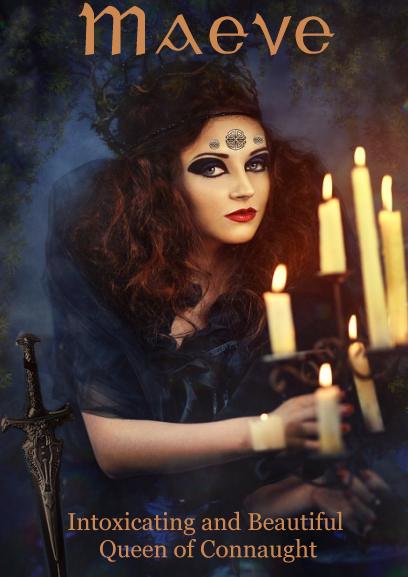
Maeve was a decisive and forceful leader who ruled over Connaught during the time of Cuchulainn, the greatest of all Irish warriors. Her beauty and sexual prowess were famous. No High King could be crowned without first having the ceremony consummated in the royal bed, such was her fabulous domination! Her husband Aillil was only granted the privilege of marrying Maeve because he was that most unique of beings: a man completely without jealousy. Maeve was an excellent warrior and general, and assembled one of the mightiest fighting forces in Irish mythology when her equal status with her husband was called into question. Early Life Maeve was one of the daughters of Eochaid Feidlech, the High King of Ireland. She was married to Conchobar Mac Nessa, the King of Ulster, as compensation for the slaying of Conchobar's father, Fachtna Fathach. The marriage was not a good one though and when Maeve left her husband her father then offered his other daughter, Maeve's sister Eithne, in marriage to Conchobar. Setting the scene for her future deeds Maeve murdered her own sister by drowning her while she was pregnant, the baby surviving the ordeal. An act of terrible ruthlessness and jealously. Maeve's father took steps to control the situation. He was a powerful ruler and installed Maeve as Queen of Connaught, deposing Tinni Mac Conri and removing him from power. But Maeve was not free of Conchobar Mac Nessa and she was raped by him as an act of vengeance, at an assembly at Tara. War between the mighty King of Ulster and the High King of Ireland followed. The Cattle Raid of Cooley One of the most enduring stories about Maeve concerns the Cattle Raid of Cooley. One evening, Maeve and her husband Aillil began to tease each other about who held the higher status. Their teasing quickly grew earnest, as each vied to prove their superiority in the relationship. They were equal in birth, equal in status, and equal in power. So to settle the matter they counted out all their belongings. The only difference between them was that Aillil had a magnificent white-horned bull, while Maeve had nothing that could compare to it! Unable to bear a subordinate role in her own marriage, Maeve sent messengers to search all of Ireland for a bull that was just as splendid as that possessed by her husband. Eventually a magnificent creature was found: the Brown Bull of Cooley. Maeve sent a delegation to the bull's owner, Daire Mac Fiachna of Cooley, offering gold, lands and even sexual favors if he would only agree to let her have the bull. Daire was initially inclined to grant her request, until he heard one of her messengers drunkenly boasting that if he would not sell it then Maeve would surely take the bull by force. Daire resented being dictated to, and reneged on the deal, refusing to part with the animal. War was imminent again as Daire Mac Fiachna was a vassal of Conchobar, the nemesis of Maeve from the past. So began the famous Tain Bo Cuailnge, the 'Cattle Raid of Cooley', in which Maeve assembled a great army of her allies from all over Ireland to invade Ulster to steal the bull. Thanks to the Ulster exiles in her ranks Maeve knew all about 'the Curse of Macha', which would put the enemy Ulster warriors out of action for nine days and nine nights, giving her time to complete her mission. But the curse did not affect the young warrior Cuchulainn, the only man who stood between Maeve and her invading army and the defenseless lands of Ulster. Despite the odds though, such was Cuchulain's skill and reputation that the army of Maeve were now in terrible trouble. Maeve decided to negotiate and through Fergus MacRoich agreed that Cuchulainn would fight in single combat against one of her champions every day, allowing the army to move while the fight was on, and stopping once the fight was over. She even offered her own daughter in marriage to the warrior who would be victorious! The plan seemed sound but Cuchulainn made such short work of her champions that Maeve resorted to sending a small band of raiders north to Cooley to steal the bull, in defiance of her deal. Maeve persuaded her greatest warrior, Ferdia, the foster-brother of Cuchulainn, to represent her in battle, but alas to no avail. Cuchulainn slay Ferdia, the last great champion of Connaught. The tide had turned against Maeve now and when her followers observed the scene they were heard to repent that they had ever been guided by such a vengeful, vicious woman. But Maeve had already made her plans. On the eve of the final confrontation between the two armies, the Brown Bull of Cooley was smuggled into Connaught by Maeve's agents and so they retreated back to Connaught. The magnificent bull was placed into a new pasture where the creature was immediately set upon by Aillil's own white-horned bull, the original cause of the strife. The two animals gored each other to death, symbolizing perfectly the wasteful conflict between Connaught and Ulster. Later Life and Death Maeve re-invaded Ulster in later years, taking her revenge on Cuchulainn for the devastation he had wreaked on her army and eventually slaying him. Maeve was ultimately killed herself by Furbaide, the son of her murdered sister, the baby who had been removed from his mother's dead body. She was felled by a sling shot bearing a hardened piece of cheese! Legend has it that Maeve is buried in a forty foot high stone cairn on the summit of Knocknarea in Sligo, buried upright, always defiantly facing her enemies to the north. Conclusion Maeve was a strong and independent character, with a knowledge of magic and sorcery. She never shirked her duty, and knew well how to encourage and lead her followers. She was definitely the stronger partner in her marriage with Aillil and was always depicted as very beautiful, yet dressed for war! She could be harsh, jealous, vicious, scheming and domineering. Always willing to go to great lengths to assert her rightful status. The name Maeve has several forms including Maedbh, Medb and Medbh and is said to mean 'she who intoxicates', perhaps alluding to her role as a sovereignty Goddess. How appropriate! In modern times her legend lives on and she is often represented as a symbol of the power of women over men in terms of sexuality, of cunning and of courage. |

|
||||

|
The story of the Asgard resembles a fiction that Erskine Childers would have been proud of. The writer of 'The Riddle of the Sands' was a member of the Anglo-Irish elite in Ireland, descendants of the families who had invaded the country in the twelfth century but who became integrated into Irish society. 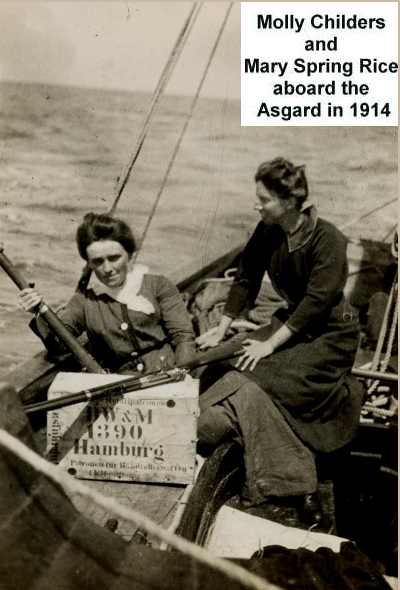
He had met his future wife at a Boston party. His bride, Molly Osgood, was the daughter of Doctor Hamilton Osgood who was a well-known Boston physician who was credited with introducing the first Rabies antibodies into the United States. He bought the Asgard as a wedding gift for the newly married couple, both of whom greatly enjoyed sailing. Having made the transition from British soldier who fought in the Boer War to an Irish nationalist appalled by British colonialism, Erskine Childers colluded with Roger Casement, Darrell Figgis, Alice Green and several others and arranged for weapons to be brought over from Germany for use in a rebellion. After unloading the guns from the German tug-boat 'Gladiator' the Asgard braved terrible weather and a brief encounter with the British warship HMS Froward. On 26th July 1914 the vessel was steered into Howth Harbour where 800 anxious members of the 'Irish Volunteers' quickly unloaded the invaluable cargo, consisting of 900 Mauser Rifles and 29,000 rounds of ammunition. The British authorities despatched soldiers from Kilmainham barracks but they failed to capture the arms after a brief skirmish near Howth. Retreating back to the city centre the soldiers fired upon and killed 3 civilians and injured 38 more at Bachelors Walk near O'Connell Street. The incident was met with outrage by the native Irish and the ranks of the Irish Volunteers swelled as a result. A further cache of weapons was landed at Kilcoole in Wicklow a few days later, met by Cathal Brugha and Sean T. O'Kelly, a future President of Ireland. The entire country now expected an all-out Civil War with the Ulster Unionists who had themselves landed over 30,000 weapons at Larne. 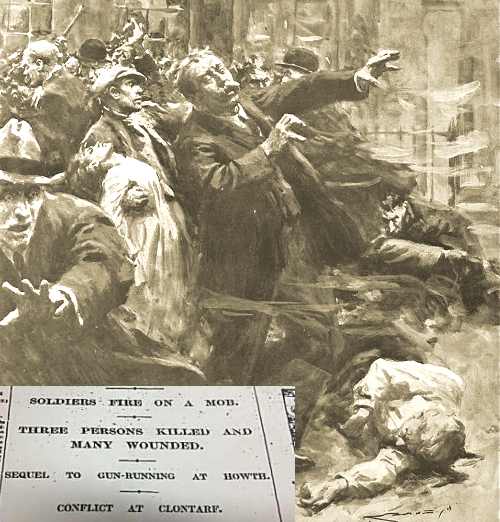
Many of the weapons that had been landed at Howth and Kilcoole were used during the rebellion. Childers later joined Sinn Fein and acted as a Director of Propaganda, having been appointed by deValera. He later served as Chief Secretary to the delegation that negotiated the Anglo-Irish Treaty although he bitterly opposed the Treaty. There are few conflicts more brutal than a Civil War and so it came to pass that Childers was executed by the Irish Free State Government that took control of the country. He was sentenced to death on a trumped-up gun charge. 'Take a step closer, boys, it will be easier that way' he called out to the firing squad as they took aim. The Civil War, the death of Michael Collins and the subsequent Declaration of Independence were all to follow from this most amazing few years in the history of Ireland. |

|
The winner was: ashley.e.hegarty@gmail.com who will receive the following: A Single Family Crest Print (usually US$24.99) Send us an email to claim your print, and well done! Remember that all subscribers to this newsletter are automatically entered into the competition every time. I hope that you have enjoyed this issue! 
by Michael Green, Editor, The Information about Ireland Site. http://www.ireland-information.com Contact us (C) Copyright - The Information about Ireland Site, 2019. 17 Páirc Ghrainbhil, Carraig Dubh, Contae Baile átha Cliath, Ireland Tel: 353 1 2893860 |

|
MARVELOUS GIFTS FOR ANY OCCASION FREE DELIVERY TO YOUR DOOR 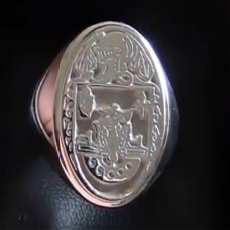
BIG REDUCTIONS! Stunning Family Crest Signet and Seal Rings 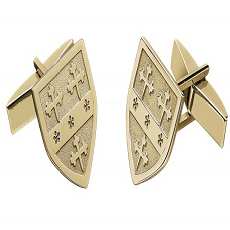
DISCOUNTED FOR A LIMITED TIME Elegant Cufflinks 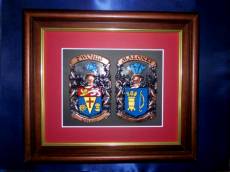
Incredible Family Crest Plaques Made in Ireland 
Superior Framed Family Crest Parchments 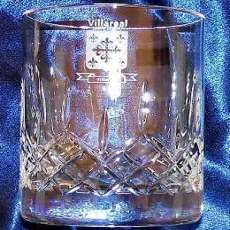
Gorgeous Glistening Galway Crystal 'Your-Name' Old Irish Sign NEW DESIGNS! 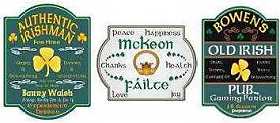
From US$34.99 - Free Delivery 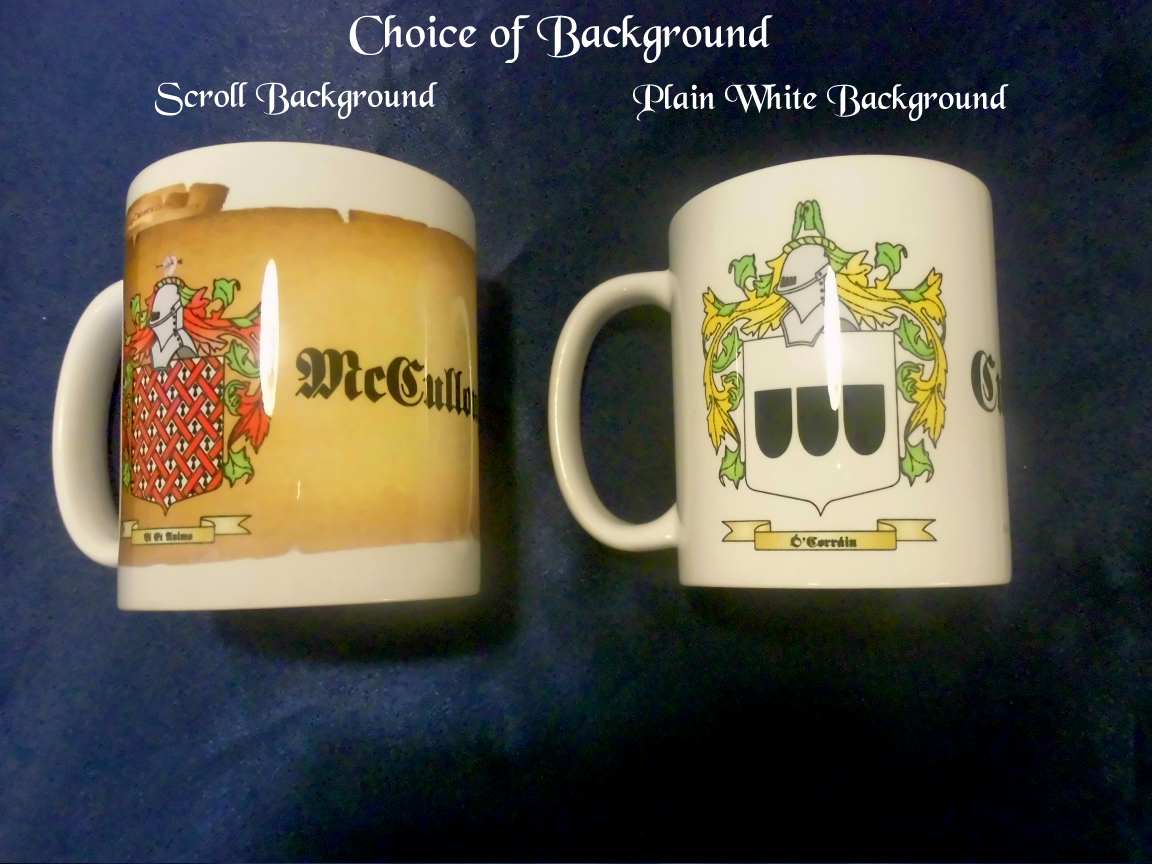
New Designs available on our Coffee Mugs 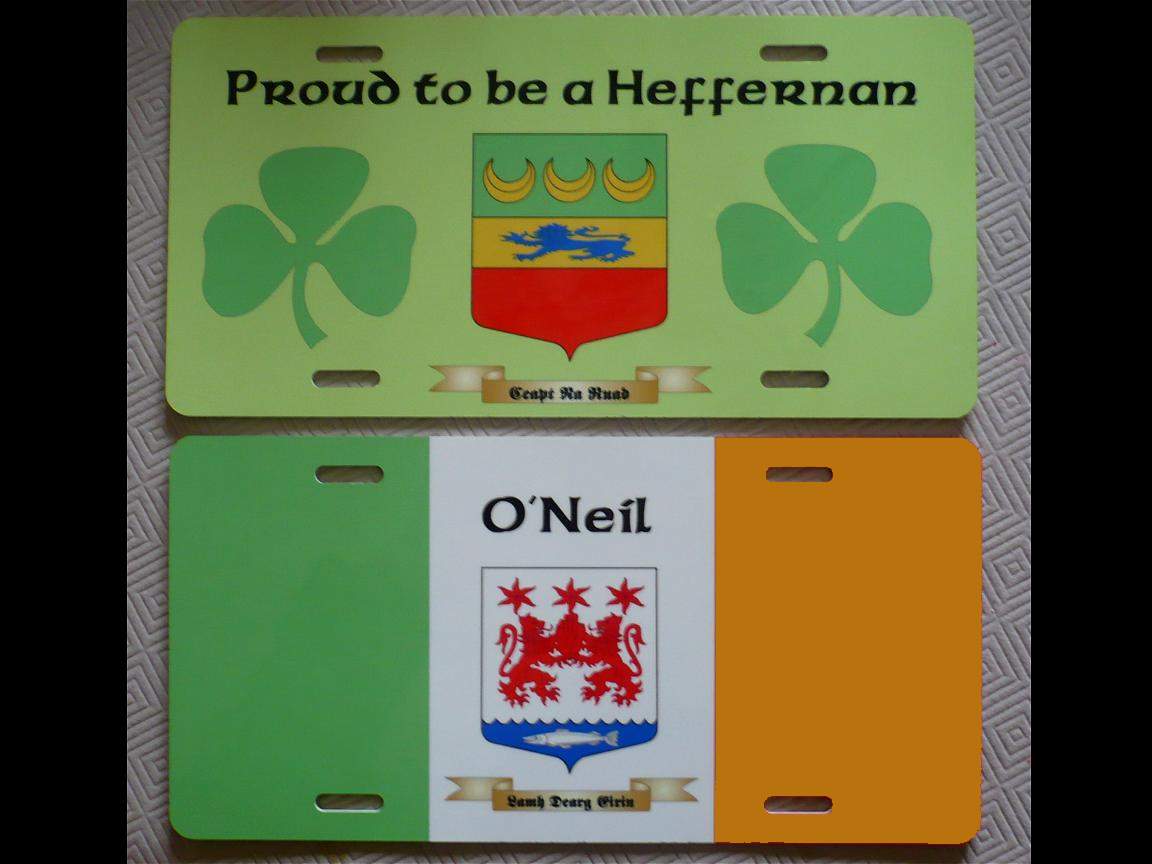
Personalized Licence Plate 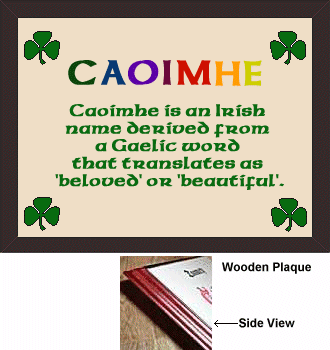
Personalized First Name Plaque. Great for Kids! 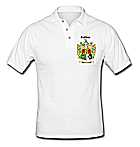
'Your-Name' Polo & Tee Shirts 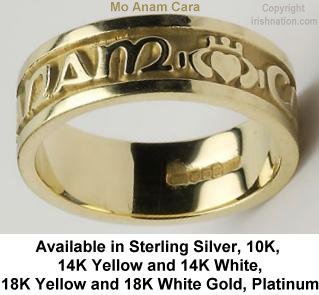
From US$69 Delivered BIG REDUCTIONS! Stunning Engraved Rings from Ireland with Irish Language Phrases. Mo Anam Cara: My Soul Mate Gra Dilseacht Cairdeas: Love, Loyalty, Friendship Gra Go Deo: Love Forever Gra Geal Mo Chroi: Bright Love of my Heart SEE MORE GREAT OFFERS AND DISCOUNTS AT: IRISHNATION.COM FREE DELIVERY FOR A LIMITED TIME! |
